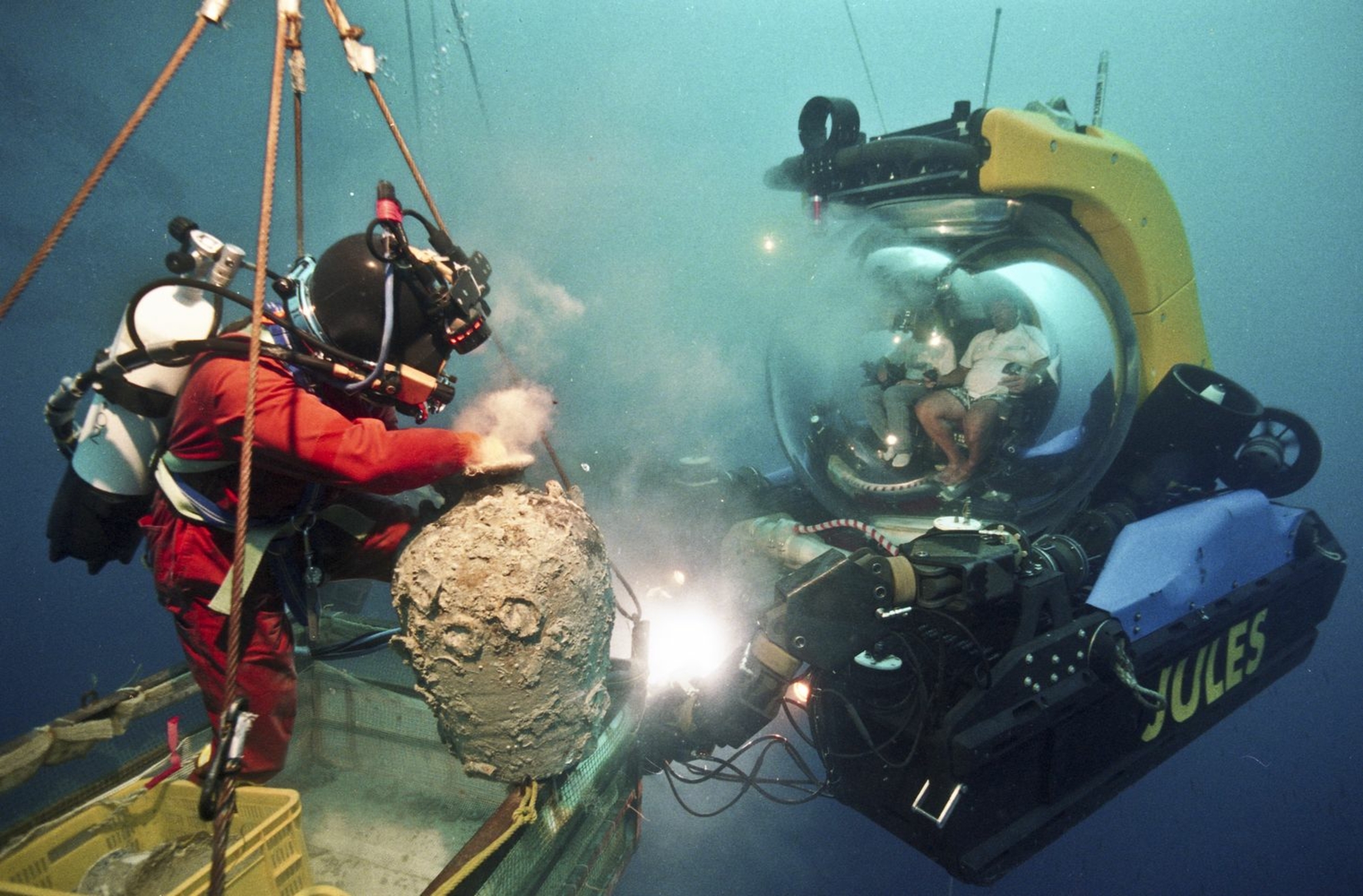
- Home
- A great scientific adventure
- From Heroic Discoveries to High-Tech Exploration
The development of underwater archaeology is intimately linked to advances in the field of technology, and humans have shown great ingenuity in their endeavours to venture ever deeper into the sea.
Air! Air!
Since ancient times humans have been swimming underwater to catch fish. With the invention of the diving bell by Edmund Halley (1691) and later John Lethbridge’s diving machine (1720), we began to explore shipwrecks. These early diving systems were gradually refined and improved and by 1823, the principle of standard diving dress had been established. With weighted boots and metal helmets, divers could now venture down to a depth of forty metres and breathe air supplied from the surface by means of a manually operated pump.
The advent of the aqualung or self-contained breathing apparatus (SCUBA) in 1943 liberated the diver from the heavy helmet and boots of standard dress. Compressed air flowing from the cylinders strapped to the diver had to be adjusted by hand until the invention of the Cousteau-Gagnan pressure regulator in 1946. This innovation provided air on demand and was a real turning point in the history of diving.
Archaeology in the 21st century
More and more discoveries are being made thanks to the development of robotics and information technology. It is now possible to study a cargo using photogrammetry, a technique which generates a 3D map of the site, or to clear sediment using a combination of a blowing or sucking device and a vehicle fitted with a camera so the operation can be controlled from the surface.
The European project VENUS, a collaboration between the nations of Italy, Portugal and France, is developing innovative methods on a wreck laden with amphorae which was found by Comex off Marseilles in 110 m of water. The site lies close to the Grand Congloué where, fifty years ago underwater archaeology took its first tentative steps. Today, the discipline is preparing itself for the future: the excavation of deep-water wrecks.


